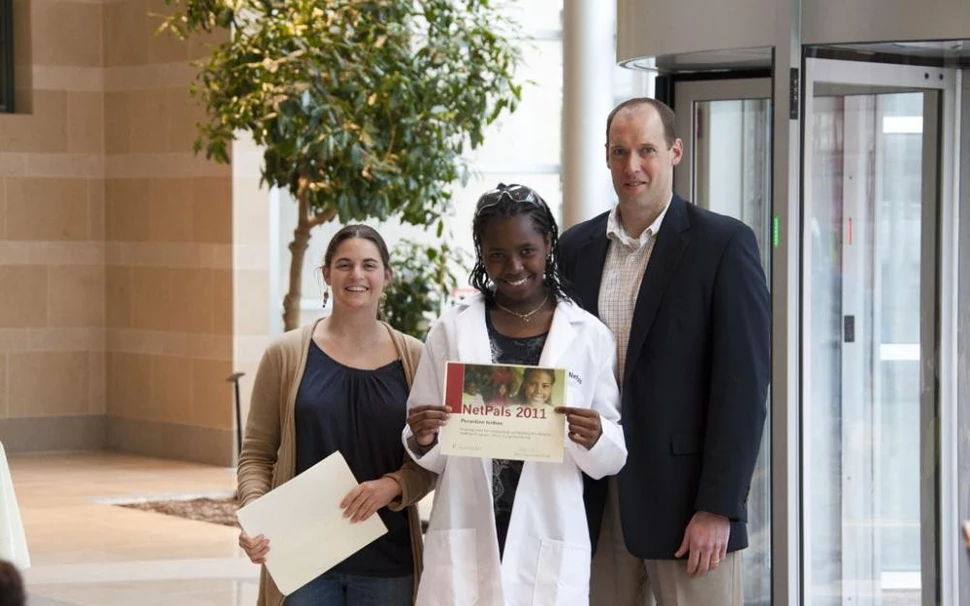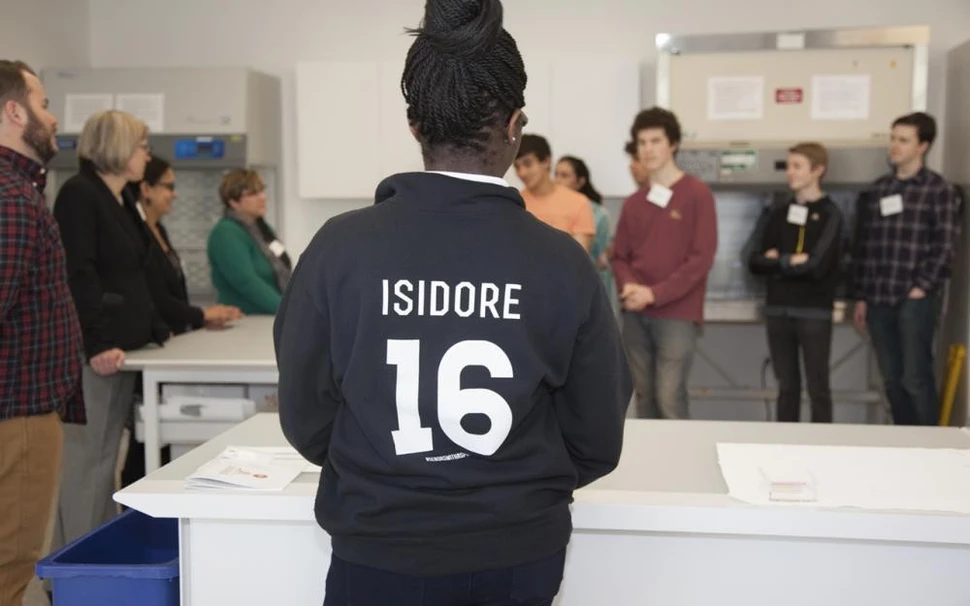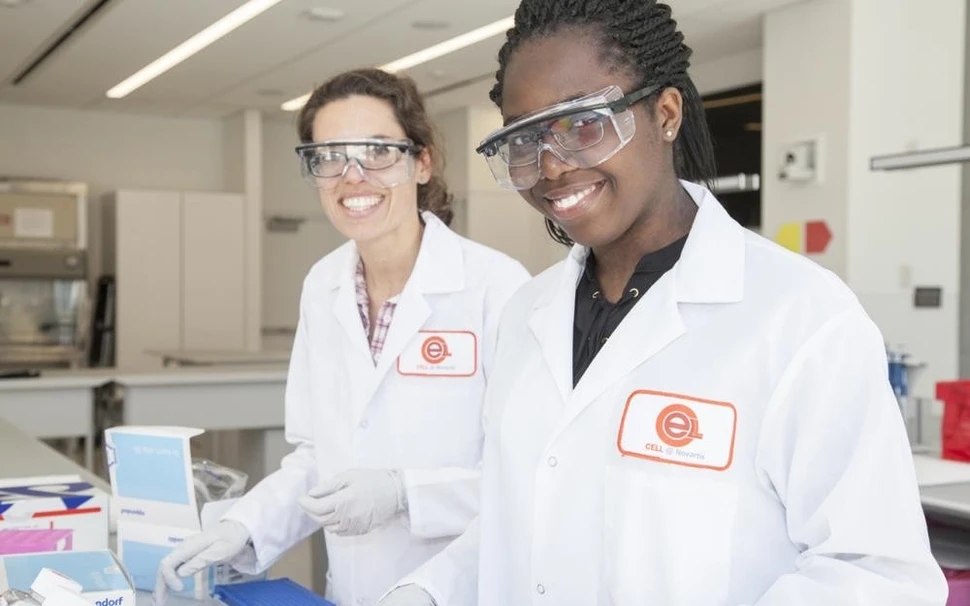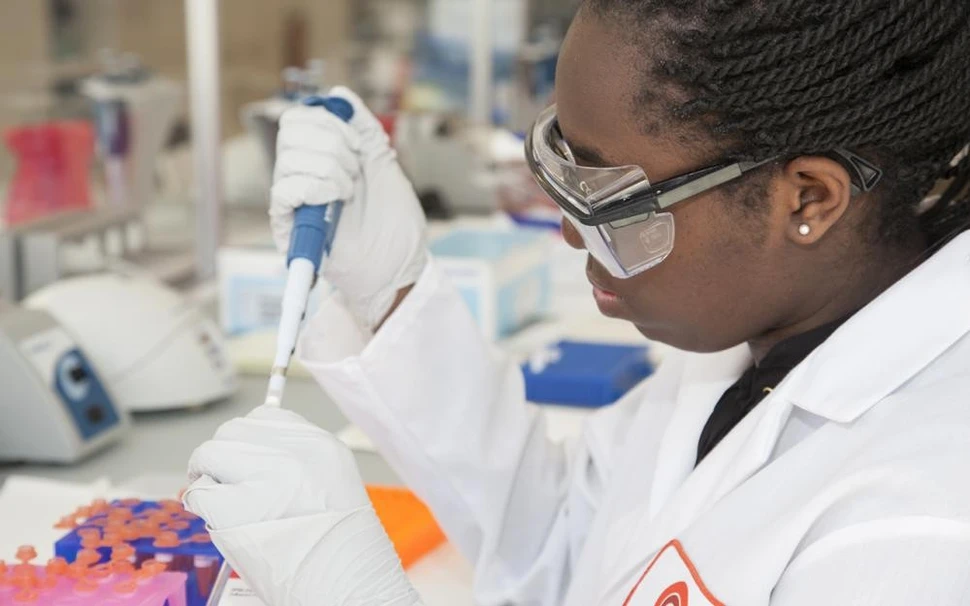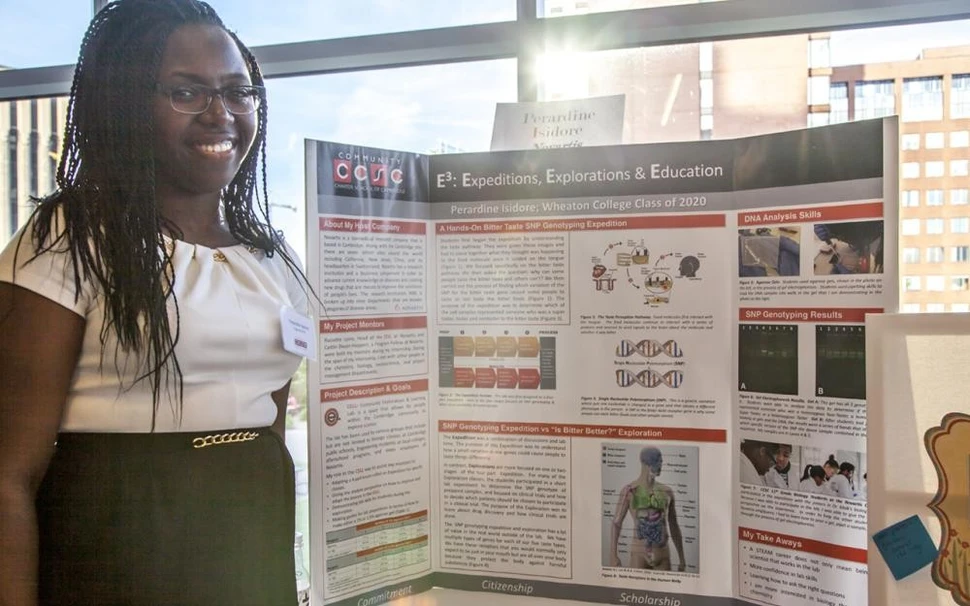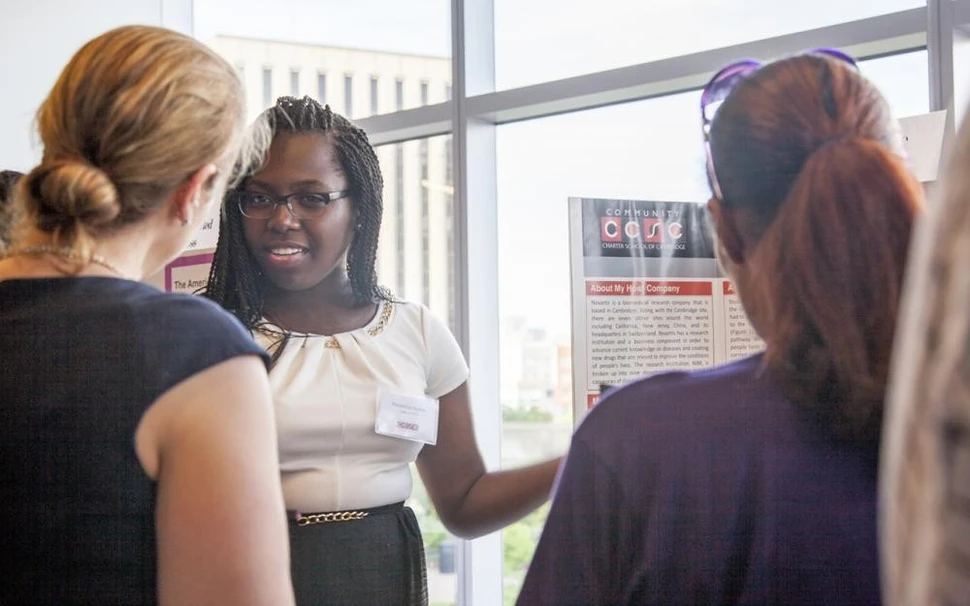A middle school student curious about science grows into a college-bound scientist with the help of mentors and local STEM programs.
The Evolution of a Scientist
A middle school student curious about science grows into a college-bound scientist.
A recent graduate of the Community Charter School of Cambridge, Massachusetts, USA, Perardine Isidore is looking forward to a life in science. She might become a neurosurgeon. Or maybe a neuroscientist. She isn’t sure yet. But having participated in three Novartis community outreach and mentoring programs during middle and high school, she’s learned what lab work is—and that she likes it. “Most high school students don’t have a chance to work at a company like Novartis,” she says. “I’m glad Novartis is taking chances on high school students.”
When did you first start working with Novartis?
Isidore: My middle school was part of the NetPals mentoring program with the Cambridge public school system. Scientists from Novartis volunteered to come in and help us with science projects. Each student had a different research question and the final product was a poster that showed a summary of what was done in the lab and what the results were. My project was about colors and clothing. Some colors absorb more heat than others, which is why people say don’t wear dark colors in the summer. At the end of the project, we had a closing ceremony at Novartis, which included a tour of the building.
Were you already interested in science in middle school?
Isidore: Yes. I had already started doing STEM (Science, Technology, Engineering and Math) activities and was interested in learning more about science and how I could play a part. The NetPals experience added the extra support of talking with scientists about what they actually do.
What brought you back to Novartis as a high school student?
Isidore: I’d been working with Breakthrough Greater Boston (a supplemental educational program for urban students) during the summers teaching biology to middle school students. Novartis also had a partnership with Breakthrough Greater Boston, so during the summer I met one of the Novartis volunteers. That same scientist ended up coming to my Advanced Placement (AP) Chemistry class later. She helped us troubleshoot issues we were having with a thermodynamics project.
When I heard about CELL (the Novartis Community Exploration and Learning Lab), I was really interested because I knew about Novartis and I knew one of its scientists already.
What did you do at CELL?
Isidore: CELL is a community lab at Novartis. I participated with my school. We learned about Novartis and its people, values, and culture. They also taught us laboratory procedures. We learned how to pipette and to prepare gels. I learned how to make an agarose gel for separating DNA fragments and how to do SNP (Single Nucleotide Polymorphism) genotyping.
After that, I continued as an intern. CELL didn’t have internships at the time, but I wanted to keep working in the lab. They arranged for me to come in and work one day a week. I helped co-teach some of the lessons and prepared the lab for the next class that was coming in. I also wrote a little guidebook about how to make gels.
Did your experience at Novartis change your thinking about being a scientist?
Isidore: I wasn’t very lab-savvy because my high school didn’t have many labs. We only had one and it was mostly used by the AP chemistry class. So I wasn’t sure if I wanted to be a scientist. I thought I wanted to be a neurosurgeon in a hospital. But being at Novartis opened my eyes to lab work. I’m really happy I had this experience and saw what a pharmaceutical company does.
What are you doing next?
Isidore: I’m planning to major in neuroscience at Wheaton College. Wheaton is a small school, so I know I’ll get the attention I need.
I’d like to work for Novartis again someday. I’d like to apply for their Gap Year Scholars Program*. It’s a program you do after you’ve completed college to get more experience before going into graduate school. Hopefully I’ll get research opportunities as an undergrad, but in case I don’t, the Gap Year program would help.
*The Gap Year Scholars Program is now called The Postbaccalaureate Scholars Program.

